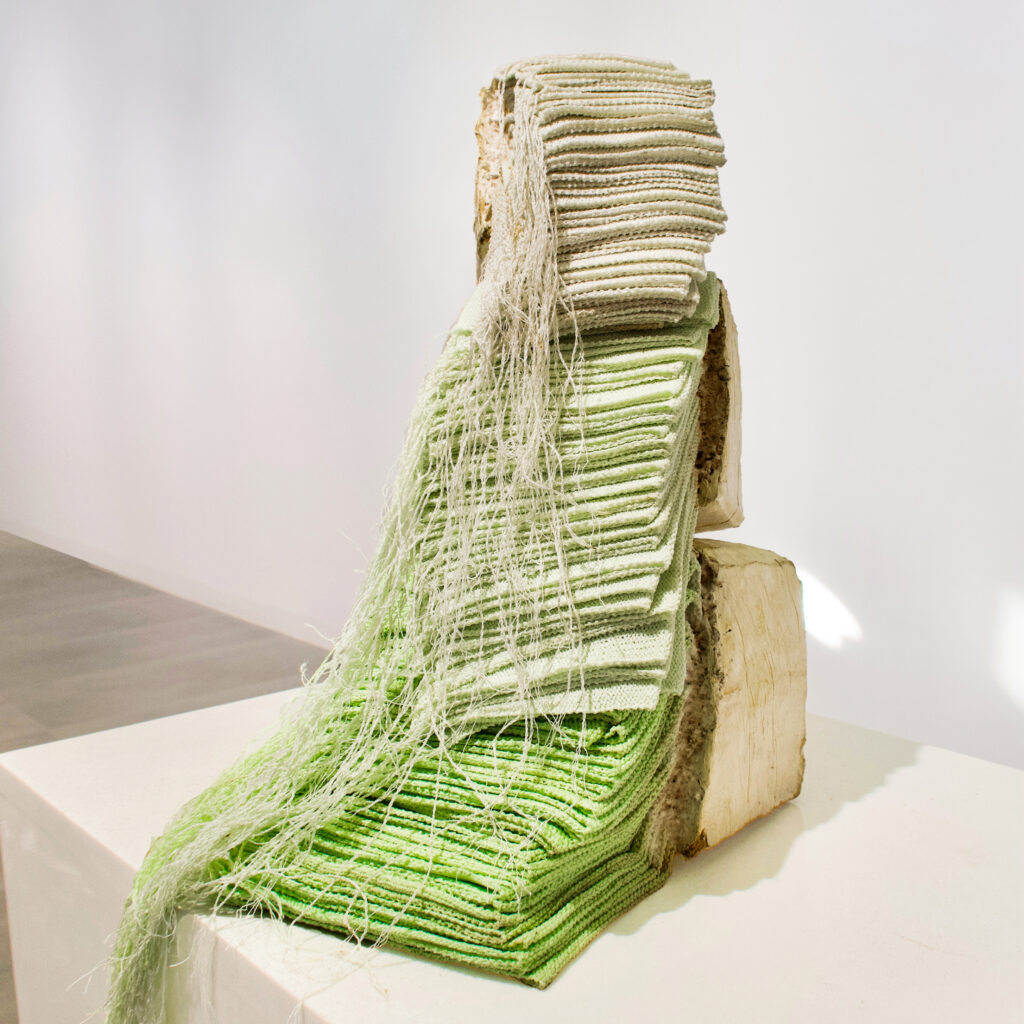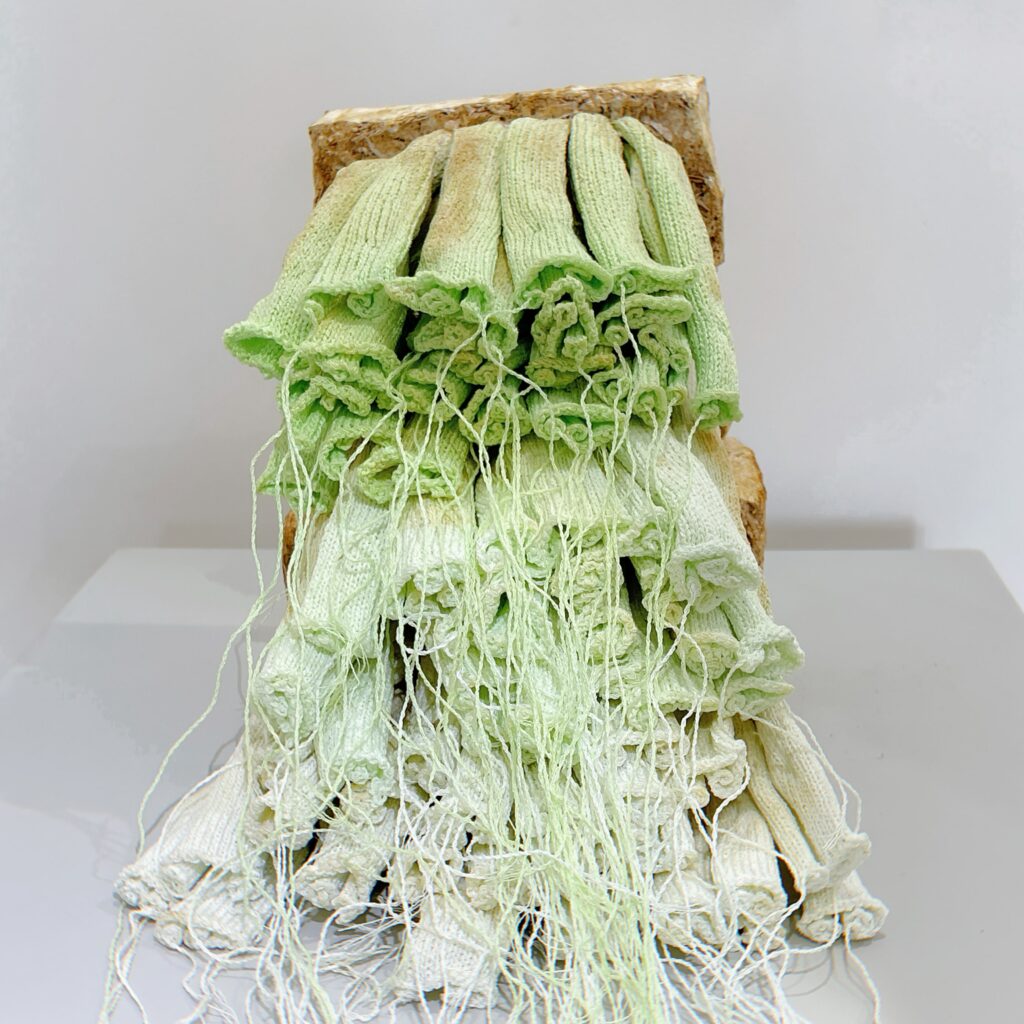Symbiosis (2024) explores the contrast between humanity’s culture of fast fashion wastefulness and the potential to reverse this change with sustainable materials that recycle themselves. Using hand-knitted textiles, straw, and mycelium, Zhang has created a living artwork that comments on the issues mentioned above with humanity. However, the work is a physical example of a sustainable future.

The hand-knitted textiles change from a very strong green at the bottom, and slowly, the dye disappears into a light tan-green. The bright green could potentially represent industrial dyes used in fabric dying that damage the environment.
The hand-knitted textiles is a critique of fast fashion and contrasts mass-produced textiles as it takes time and does not produce as much waste as mass-produced cloth. In contrast, the mycelium will eventually decompose the textiles (and the straw) and nourish itself to recycle the material to create something new. Thus, the artwork becomes living through mycelium and its decomposition of the straw and textiles.
This makes the viewer an active participant as they witness these changes over time. Incidentally, this slowness of the decomposition of the textiles is opposite to the fast-paced creation of fast-fashion textiles. Thus, it allows the viewer to reflect on the extremely fast industrial production compared to sustainable materials’ slow and regenerative process. This contrasts extremely successfully and encourages viewers to slow down their consumption habits and perhaps choose alternate materials or reuse rather than purchase.

Life Touches Matter (2024) is another living bio artwork which uses the same materials as the previous artwork: mycelium, straw and hand knitted textiles. It also invites the viewer to question themselves on where their clothes come from and how they are made. Thus allowing the audience to see, in person, alternative materials (mycelium) that they can use to combat the destructive and wasteful industry of fast fashion.
The title of the work emphasizes how biological systems and the materials they are interacting with are always in a cycle of movement. Of which movement- one is made and then decomposes into new matter, which then repeats this cycle. By seeing the work and its title, one can understand that industrial waste is an issue and that using materials that become life eventually will not damage this planet.
Overall, both of the artworks that Zhang shows within this publication are powerful when exposing the issues of fast fashion. Through the showcasing of the waste; it does not just criticize fast fashion but rather showcases an alternative which turns the work into a living artwork. The mycelium has been presented as an alternative material to use which is healthier to this planet
Incidentally, mycelium can be used as a form of fabric in which its uses have been leather and as a textile material itself. Even if the usage of mycelium as an alternative is not the main message of the work; this interpretation allows for the reader to explore it as an alternative.
